




NSW Nurses and Midwives’ Association

For all membership enquiries and assistance, including The Lamp subscriptions and change of address, contact our Sydney office.
Sydney Office
50 O’Dea Avenue, Waterloo NSW 2017 (all correspondence)
T 8595 1234 (metro) 1300 367 962 (non-metro)
F 9662 1414 E gensec@nswnma.asn.au
W www.nswnma.asn.au
Hunter Office
8–14 Telford Street, Newcastle East NSW 2300
NSWNMA Communications Manager


Danielle Blasutto T 1300 367 962
For all editorial enquiries, letters and diary dates
T 8595 1234 E lamp@nswnma.asn.au
50 O’Dea Avenue, Waterloo NSW 2017
Produced by Hester Communications T 0414 550 376
Press Releases
Send your press releases to: F 9662 1414 E gensec@nswnma.asn.au
Shaye Candish, NSWNMA General Secretary
Michael Whaties, NSWNMA Assistant General Secretary
O’Bray Smith, NSWNMA President
Michelle Cashman, Long Jetty Continuing Care
Richard Noort, Justice Health
Liz McCall, Byron Central Hospital
Diane Lang, South East Regional Hospital, Bega Valley
Printed by Printed by IVE Group Sydney
Advertising
Danielle Nicholson T 8595 2139 or 0429 269 750
F 9662 1414 E dnicholson@nswnma.asn.au
Information & Records Management Centre
To find archived articles from The Lamp, or to borrow from the NSWNMA nursing and health collection, contact: Adrian Hayward, Coordinator. T 8595 2175 E gensec@nswnma.asn.au
The Lamp ISSN: 0047-3936
The Lamp is the official magazine of the NSWNMA. Views expressed in articles are contributors’ own and not necessarily those of the NSWNMA. Statements of fact are believed to be true, but no legal responsibility is accepted for them. All material appearing in The Lamp is covered by copyright and may not be reproduced without prior written permission. The NSWNMA takes no responsibility for the advertising appearing herein and it does not necessarily endorse any products advertised.
Authorised by S. Candish, General Secretary, NSW Nurses and Midwives’ Association, 50 O’Dea Avenue Waterloo NSW 2017
The NSWNMA collects personal information from members in order to perform our role of representing their industrial and professional interests. We place great emphasis on maintaining and enhancing the privacy and security of your personal information. Personal information is protected under law and can only be released to someone else where the law requires or where you give permission. If you have concerns about your personal information, please contact the NSWNMA office. If you are still not satisfied that your privacy is being maintained, you can contact the Privacy Commission.
Free to all Association members. Professional members can subscribe to the magazine at a reduced rate of $30. Individuals $84, Institutions $140, Overseas $150.


A recent report by the Australia Institute’s Centre for Future Work analysing the impact of the state government’s wage caps over the last decade makes for sober reading (see pp 18-19).
The report estimates that, compared to long-run pre-cap wage trends, experienced nurses and midwives made $335 less per week in 2021-22. That is $17,500 less per year.
On a cumulative basis they have lost $80,000 since the caps were introduced.
The news gets worse, according to the report. If the Perrottet government stays in office beyond the March state election this “pay suppression” will get much larger if the caps remain in place.
And they will stay in place if the government is reelected and maintains its current intransigent position.
By 2023-24, the report says –factoring in the government’s stated plan to cap wages growth to 3 per cent and 3.5 per cent – the loss in wages will grow to $390 per week or over $20,000 per year.
Cumulative losses for someone who has worked throughout the wage cap period would reach $120,000.
This economic pain will not stop when you retire. Because superannuation contributions are automatically tied to wages, nurses and midwives have lost thousands of dollars in contributions from their employers. Thousands more have been lost in investment income on those contributions.
The report shows starkly the brutality of the government’s attack on your standards of living over the last decade.
The government’s meanness over public sector pay stands in stark contrast to other important players in the economic and political realms. The Fair Work Commission has granted a 15 per cent pay increase for aged care workers.
The federal government supports this decision. The NSW Labor Party and the Greens have committed to abandoning the wages policy.
The NSW government has also been left behind by the other parties on staffing.
The ALP has committed to introducing an enforceable safe minimum staffing system for nurses and midwives working in public hospitals across NSW.
Enforceable ratios for EDs, ICUs and maternity are significant. Regional areas too have not been forgotten with MPS services also a part of the commitment.
Labor’s announcement is a significant injection of hope for those working in the public health system. And it is just the beginning. There will still be a lot more work to be done to resolve staffing issues for all specialty areas.
We have been fighting for ratios for over a decade and we are finally been listened to by everyone except the ones who could make this happen today – the Perrottet government.

But patience, resilience and commitment eventually prevail as our colleagues in aged care have shown us.
The Albanese government has quickly introduced reforms into parliament that our aged care members themselves describe as “brave and ambitious”.
There has also been an interim 15 per cent pay rise with the possibility of more to come from the work value case that the ANMF prosecuted in the Fair Work Commission.
The federal budget also contained significant increased funding to aged care to facilitate the reforms and the wage increase.
The Federal ALP has honoured its election promises in aged care and we thank them for that.

But even as we celebrate the undoubted progress in aged care we have to remain vigilant –especially against those employers who will try to game the system. Already we have Southern Cross Care in Tasmania making ENs redundant and replacing them with lower-paid personal care workers despite receiving significant funding increases from the Albanese government.
The Albanese government has voiced its disappointment that when there has been a significant increase in federal funding for care and when there are acute workforce shortages Southern Cross is proposing to terminate the employment of longstanding, experienced and dedicated nursing staff.
There is a lesson here we need to learn: we can never let down our guard and we need to keep employers accountable or there will be a constant erosion of the gains we have fought very hard for. n
The report shows starkly the brutality of the government’s attack on your standards of living over the last decade.
We
The trends are terrible but they are going to get even worse the longer we have a Perrottet government.
Don’t look down, look up!
An esteemed colleague of mine said to me as I left work this morning that we’re standing on a cliff edge. On my way back to work – on a Saturday night, no less – I thought about all the conversations I have had with my coworkers over the last few weeks. And I realised we’re not on the edge at all. We’re like the cartoon coyote running way past the edge, and hovering in mid-air. The only reason we haven’t started free falling is because we haven’t looked down; because we all know that when the coyote looks down, that is when he falls to the ground below.
That’s what we’re doing right now. Every night our entire team –paramedics, nurses, dispatchers, DOMs, managers, doctors, and allied health staff – carry the burden of a failing health care system that is short-staffed and overworked.
We’re just putting fingers into that dam wall. We just haven’t looked down. That’s it.
I don’t intend to look down. I did once, and it broke me. I will hope to continue to be kind to my colleagues, my patients, and everyone I come across. And I hope you feel kindness and gratitude, because that’s what you deserve.
Rachel Hughes, EN
caused by fossil fuel extraction.
We were shown the incredible underground river systems, told of the diversity of plant and animal life sustained in this region, learned about the connection to country for the Gomeroi people and the ceremonial significance of this land.
We also learnt about the proposal for 850-plus gas wells that are being planned in this area – which would be blasted through into the Great Artesian Basin, creating toxic salt by-products that no-one – including the government and the mining companies – knows how to dispose of safely.
The Gomeroi people have voted overwhelmingly AGAINST the proposed gas wells, and in response Santos has taken the Gomeroi Nation to the Native Title Tribunal to try to ultimately dispossess them of their land. Of the 180 disputes taken to the Native Title Tribunal – only three have ever been decided in favour of First Nations people. The verdict in this current case is still to be decided, but this is a rigged and racist system that perpetuates the harms of colonisation and continues the destruction of the land.
This is our battle. We know that dispossession of First Nations people from their land has caused catastrophic health outcomes across this nation – and as nurses it’s our business to be aware of this.
stand proudly with our brothers and sisters across the union movement in condemning Santos’s project and stopping it in its tracks.
Let us commit to fighting for the health of our country, the health of the Gomeroi nation and against the ongoing harmful dispossession of First Nations people from their lands.
Damien Davis Franks, RN

Member leaders representing many of the 28 facilities operated by Ramsay Health Care are currently in negotiations with Ramsay to seek improved pay and conditions in a new Enterprise Bargaining Agreement.
With this in mind, the Association brought together these member leaders from regional and metro areas, along with the organisers from the Association for a day to discuss the issues at Ramsay and how we could collectively build our strength. All up there were 30 members attending this timely education day.
By bringing us together, Ramsay members were provided with a space to clearly and safely voice their thoughts and share their own stories about staff shortages.
health consequences of indiscriminate gas extraction
On 4 November, other NSWNMA members and I joined a trade union contingent of activists and travelled to Coonabarabran to see first-hand both the beauty of the Pilliga region but also the devastation
We know that fuelling further global warming will cause catastrophic health outcomes across the world. Australia, our patients, and our families will not be excluded from this.
So as nurses and midwives, we must lend our support and commit to act when required to by the Gomeroi people. It is a commitment we must make if we are serious as a union about standing with our First Nation brothers and sisters to fight for a fair and equitable future.

Let us be the follow-through … let us not be another empty promise. Let us
We shared our stories of managing through the past few years and for regional nurses this included not only COVID but also the other challenges of drought, bushfires and now floods. At the end of the day, we felt empowered to go out amongst our peers to share the knowledge. We continue to put pressure on Ramsay to implement safe staffing levels, the same as has been promised within the public system.
So a big thank you to the Association .
Lyn Whitlam RN
After the numerous inquiries, reviews, and a Royal Commission into Aged Care Quality and Safety, we now have a federal government that is committed to bringing security, dignity and humanity back into our ailing aged care sector.
The passage of the Aged Care Amendment Bill (Implementing Care Reform) 2022, through federal parliament was a historic moment for the aged care sector. In Aged Care Minister Hon Anika Wells’s recent speech she acknowledged that “it is the aged care workforce who are this sector’s beating heart and without workers, the discussions of care minutes, of improved systems, of returning security and dignity to aged care means little …”
Aged care reform has finally begun with a new funding model, the Australian National Aged Care Classification (AN-ACC); a new code of conduct for approved providers and aged care workers; star ratings for all residential aged care services; mandating a registered nurse in every aged care facility on site 24 hours a day, 7 days a week and an average of 215 minutes of care for aged care
residents per day; a pay rise for aged care workers; and improved transparency and accountability for how government funding is spent to deliver care and services for older Australians.
Moreover, the federal government has committed to fund the outcome of the Fair Work Commission’s review of pay case for aged care workers. The Fair Work Commission has just announced its stage one ruling on the aged care work value case, awarding residential and home care workers who provide direct care a 15 per cent pay rise. It found that “the existing minimum rates do not properly compensate employees for their work and that the bargaining system has completely failed aged care workers and it’s only by taking protracted court action that aged care workers have received some measure of justice.” I commend the federal government for committing to overhauling the aged care system – a brave, ambitious move that will improve the lives of many aged care residents, their family members and our aged care workers. There is still a lot of work to do, but this is a good beginning.
Jocelyn Hofman, RN

SEND YOUR LETTERS TO Editorial Enquiries
EMAIL lamp@nswnma.asn.au fax 9662 1414
MAIL 50 O’Dea Avenue, Waterloo NSW 2017
Please include a high-resolution photo along with your name, address, phone and membership number. Letters may be edited for clarity and space. Anonymous letters will not be published.
If there’s something on your mind, send us a letter and have your say. The letter of the month will WIN a gift card. The letter judged best each month will receive a $50 Coles Group and Myer gift card.
Thousands of nurses and midwives walked off the job for 24 hours on 23 November.
It was the fourth statewide strike this year and the anger shows no signs of dwindling.
“We have been pushed around, bullied and fined, but we have stayed strong, and we keep standing together,” NSWNMA General Secretary, Shaye Candish, told 3000 nurses and midwives gathered in Sydney’s Martin Place.

Shaye said the state government cannot continue to ignore the needs of nurses and midwives and the needs of patients.
“The broken NHPPD system is continually ignored and undermined. Your goodwill is being manipulated by an unsupportive government that refuses to take responsibility for the staffing crisis they created,” she said.
“This government just thinks nurses and midwives are collateral damage after the pandemic.”
Shaye also called for the government’s discredited wages cap to be scrapped.
“Healthcare as we know it is deteriorating in front of our eyes and NSW is being left behind as other states capitalise on the falling wages and conditions we have in NSW and entice our peers to work interstate. NSW is now the second-worst-paid state in the country,” she said.
“The wages cap has suppressed your wages for more than 10 years. This government has saved itself $120,000 from each public sector nurse and midwife since the cap was introduced.
“The wages cap will impact nurses and midwives into their retirement too. It is deeply discriminatory policy designed by politicians who have no
understanding of the value that you bring to your communities.”
NSWNMA Liverpool Hospital Branch President and emergency nurse, Melissa Mansell, described the physical and mental toll bearing down on overworked nurses and midwives.
“How can the job I love hurt me this much? How can fighting for my patients be this difficult? How can being a nurse make me feel so sick I don’t want to do it anymore?” she said.
NSWNMA Cooma Hospital Branch President and theatre nurse, Bob Lloyd, told the Sydney crowd that poor staffing was rife in regional areas.
“Half our ward nurses are agency on short-term contracts to fill a huge number of vacancies – just like a lot of other regional hospitals across the state. We need a better permanent skill mix and the resources to make that happen. Our community deserves better care. Our staff
deserve better care,” he said.
NSW Assistant General Secretary, Michael Whaites, said there was no choice but to continue fighting for ratios.
“Every day they refuse to fix the staffing crisis is another day risking patient safety, another unnecessary instance of missed care.
“And that’s why every day we fight for patient safety. We will continue to take action until change is implemented – until they implement shift-by-shift ratios.”
NSWNMA President, O’Bray Smith, reminded the rally that nurses and midwives have plenty of power to wield in the March state election.
“We are powerful when we stick together. We hold 75,000 votes in NSW. We need to remind the politicians that we are too big, too loud and too angry to be ignored. Let’s continue the fight until we get what we need and what every patient in NSW deserves,” she said. n
‘Your goodwill is being manipulated by an unsupportive government that refuses to take responsibility for the staffing crisis they created’.
— NSW General Secretary, Shaye Candish
The ALP has committed to support our ratios claim in ED, ICU, MPS, MAT and all current NHPPD units. It has also promised to scrap the wages policy.




• The Greens have tabled legislation to deliver ratios across NSW hospitals. They also support the scrapping of the wages cap.
• The Perrottet government remains intransigent on both ratios and the wage cap – a policy of more of the same.

Where the political parties stand on our claim
‘We will continue to take action until they implement shift-by-shift ratios.’
— NSW Assistant General Secretary, Michael Whaites
Bianca works in ICU
“I’ve been a registered nurse for almost 30 years and I have never ever seen the public health system as bad as it is today. Don’t get me wrong – I still love being a bedside nurse – but I am sick and tired of ending every shift feeling like I have failed my patients – unable to do all those tasks that I wanted to do, having to prioritise who gets care and what sort of care they receive.
My soul is crushed and I’m not sure how much longer I can keep doing this.
You would think that we in ICU are ‘protected’ and that we would be staffed appropriately, but like everywhere else in the hospital we are often working short. Patients are sent to the wards sooner than we would like in order to make room for the next critically ill patient who requires our specialised care. It breaks my heart as we often see these patients bounce back to ICU, as they have failed to thrive on the wards.
This is not a failing on the part of ward nurses – this is a failing of the system. This is not a result of our actions, but the inaction of the current government. Yet we are the ones being punished. No wonder staff are leaving.” n

Ratios would mean a world of difference in mental health
Sarah works in acute mental health
“Mental health nursing is a highly skilled and challenging area of nursing. As with all specialised areas, many of these skills take years to develop.
Mental health has long struggled to attract and retain nurses, and no commitment to ratios is only exacerbating the issue. We have many senior nurses retiring or leaving, and an increasingly junior and inexperienced workforce.
When nursing students come for clinical placement, it will often be their sole experience of mental health throughout their course, which means it’s a make-or-break placement.
Students frequently come to their mental health placements feeling apprehensive. With ratios we could support and mentor these students properly, thereby increasing the chance they have a positive experience and encourage them into mental health nursing.
Instead, they are thrown in the deep end with limited educational support.
Ratios would give our senior nurses time to mentor and educate our new grads, and help us retain new grads.

Ratios would allow us the time to build therapeutic relationships and to respond to people’s distress.
Ratios would allow us the time to reassure families, and to create environments where people feel safe and supported.
Ratios would help us pick up deterioration early, thereby reducing incidents of self-harm, violence and aggression.
Ratios would make a world of difference in mental health nursing.” n
‘My soul is crushed and I’m not sure how much longer I can keep doing this.’
— Bianca Vergouw, RN
‘Ratios would give our senior nurses time to mentor and educate our new grads.’
— Sarah Ellyard, RN
Robert works in theatres
“I’m from a small rural hospital in the Snowy Mountains. We are the main health service for a community of 22,000 people, plus a travelling workforce for one of the biggest infrastructure schemes in the state and an endless number of seasonal tourists and workers.
For 22,000 people, we have no ICU, no HDU; we couldn’t even get a close observation unit off the ground! Our community must travel interstate to get the care they often require. Away from their families. Away from their support networks. And away from the health service they know and trust. Staff are covering call on their days off. Being on call means you can’t make plans that will take you out of town, you can’t go out fishing or swimming or do anything anywhere that doesn’t have phone reception, which is pretty bad in the countryside. So why do we do it? Because we care – we care about our community.
Our rural health minister is very happy to come down and get their photo taken for the brand-new ED and maternity units that have been built, but are unsafe to work in and unfit for purpose.
However, can we get the staff and services that the hospital, and the community need? Of course not!
Our community deserves better care! Our staff deserve better care!
It’s time that rural health got a better deal!” n
Melissa works in ED “Being a nurse used to give me happiness, pride and a sense of purpose; now, this profession has me feeling inferior, neglected, abused and taken for granted.
After our first strike in February, I realised I was not alone; my story was one of thousands across the state. At the first strike, nurses finally spoke up – with thousands walking off. We realised it was time we used our power as a union to demand better working conditions for ourselves and better healthcare for the people of NSW.
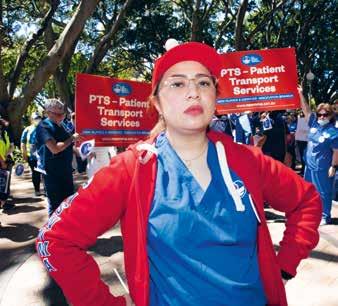

However, I wonder why the current government refuses to listen to real experts. They continue to ignore our cry for help. Even after three strikes, the Liberal government refuses to acknowledge the unsafe staffing our state is facing.
So, my question to you, Brad Hazzard and Dominic Perrottet, is how the hell do you sleep at night? How can you deliberately refuse to listen to the nurses and midwives on the floor, even after hearing all our heartbreaking stories?
I assure you we will not hesitate to walk off the job consistently until you give us what we desperately need. We will not stop fighting for our patients and colleagues.” n
It’s time rural health got a better deal.
‘Why do we do it? Because we care about our community.’
— Robert Lloyd, CNE
‘After our first strike in February, I realised I was not alone.’
— Melissa Mansell, RN
Nurses and midwives from all corners of the state tell Macquarie Street: “The bush needs ratios and fair pay too!”
94 per cent of nurses voted in favour of stopping work for 24 hours on Wednesday, 23 November. Rallies were held at the following sites:
• Sydney CBD
• Albury
• Armidale
• Bega
• Blayney
• Broken Hill
• Buronga
• Cobar
• Coffs Harbour
• Coolah
• Forster
In the lead-up to our strike day, November 23, the State Emergency Services issued a flood evacuation order for the Riverina town of Deniliquin.
The fast-rising Edward River was threatening to cut the town in half. “Some of our members were out sandbagging homes and shops,” said branch president Rhonda Dixon.
To minimise disruption to the community battling floodwaters the Deniliquin Hospital branch of the NSWNMA decided not to strike.

Instead, members put up campaign posters around the hospital, wore NSWNMA badges and staged a protest outside the emergency department, which received favourable coverage in local media.
The river peaked without major flooding and the evacuation order was later cancelled.
Motorists driving through the South Coast town of Milton gave an enthusiastic response to striking members who marched with placards urging them to “Honk for patient safety”.
Three hospital doctors and members of the public marched alongside them. Also on the march was Robyn Bean, a life member of the NSWNMA and former EN at Milton Ulladulla hospital. “Robyn is in a wheelchair after losing a leg to cancer – she comes to all our rallies,” said Teresa Redmond, delegate for the NSWNMA’s Milton Ulladulla branch.
Teresa said branch members had become more enthusiastic about the campaign because the last two rallies were held locally in Milton rather than bigger regional centres.
• Gilgandra
• Grafton
• Griffith
• Kempsey
• Lightning Ridge
• Milton Ulladulla
• Nelson Bay (NSWNMA Tomaree Community Hospital Branch)
• Newcastle
• Nowra (NSWNMA Shoalhaven District Hospital Branch)
• Orange
• Peak Hill
• Port Macquarie
• Singleton
• Tamworth
• Taree (NSWNMA Manning Hospital Branch)

• Trangie
• Tweed Heads
• Wagga Wagga
The strike at Manning Base Hospital on the Mid North Coast got widespread media coverage that reflects growing community awareness of the hospital’s unsafe staffing levels. The Manning River Times, Prime and NBN television and ABC Mid North Coast radio all reported on the campaign for ratios and better pay.
“The community is starting to become aware of the staffing problem and how unsafe it is,” said Scott Grant, NSWNMA branch secretary at Manning Base.

“We’ve been telling management this for a couple of years but they don’t listen. We feel very unsupported.
“We have to stay the course; it’s a hard long battle, but we will get change. We can’t give up.”
Members at NSW Air Ambulance showed their support for the NSWNMA’s ratios and pay campaign.


“The bush needs ratios too!” was the message from this rally at Buronga OneHealth. Buronga is on the Murray River in the state’s far west.
A NSWNMA rally on the far north coast got an unexpected boost from workers building the new Tweed Valley Hospital.

The day before Tweed Hospital nurses and midwives went on strike, building workers attached two big banners to the safety railings of Tweed Valley Hospital now under construction on the state’s far north coast.
Hung between the 4th and 5th floors of the site, the banners read “Ratios –put patient safety first”.
Construction union members attached the banners at the request of the Tweed Hospital branch of the NSWNMA.
Branch president Kristin RyanAgnew said the branch was finding it difficult to drum up media interest in the strike until the banners went up. “Photos of the banners went all over social media. That got the press interested – they started ringing our branch officials for comment,” she said.
The NSW Health Ministry reportedly contacted construction site management and told them to remove the banners.

However construction unions refused to take them down and even offered to put up bigger ones.
The construction site was the venue for a rally attended by more than 100 nurses and midwives from Tweed, Murwillumbah, Ballina and Byron hospitals.
Kristin said the building unions – CFMEU, plumbers union and electricians union – gave the rally “amazing support”.
“The CFMEU stopped all trucks coming onto the site and shut the gates for our safety.
“Every worker on the site – close to 400 of them – stopped work and joined us.
“They lined up behind us and joined in our chants – it was so loud it seemed like the ground was shaking.
“We gave our speeches in front of the gate with members of the public videoing the rally.
“Lots of building workers came up to us and said they were happy to support us because their relatives and friends were nurses and they knew what our conditions were like. They said they couldn’t believe the conditions we worked under.”
Kristin said the rally got younger nurses in particular “really fired up – it’s created a real buzz around the hospital and made people more invested in the issues.”
“We’re so happy we got the support of the construction unions because it’s made the community sit up and take notice.
“They’re starting to realise that this magnificent structure sitting on the hill isn’t as wonderful as it’s made out to be if we can’t staff it safely.”
Tweed Valley Hospital is due to be finished in June 2023 and receive the first patients in November.
However it is most unlikely to be adequately staffed given that the existing nearby Tweed Hospital struggles with a critical nurse shortage.
Many nurses have left to take jobs at Gold Coast University Hospital and other Queensland health facilities just over the state border, where nurse-to-patient ratios and higher wages are on offer.
“We estimate a first year RN in Queensland earns $22,916 more than their counterpart in NSW,” Kristin said.
n
‘Every worker on the site – close to 400 of them – stopped work and joined us.’
— Kristin Ryan-Agnew





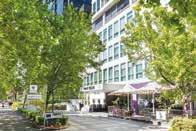
A new NSWNMA leadership has been elected that is focussed on winning better lives for nurses and midwives and their families, to improve the healthcare system for our communities, and to stand up for the professions of nursing and midwifery.


“Michael and I take on the responsibility of leading this great union with pride, humility, energy, passion and dedication.
Under our leadership the Association will give nurses and midwives a strong voice at the table where decisions are made – in forums, industrial tribunals and in state and national politics - so we can improve the lives of nurses, midwives, our patients and our communities.
Every day you make a real and lasting contribution to society. It will be central to our work that you are recognised for it.”
“The key to our future success is the ongoing growth of our union; investment in our member leaders and an active membership with strong networks that are supported and resourced. This will give us the strength and power to fight for stronger nursing and midwifery workforces and to confront the threats to our profession.
Shaye and I are excited about the future of this union. We are determined that our members have an active role in shaping and improving their workplaces and that they have the opportunity reach their full potential as professionals.”
RN, Midwife, Masters in Midwifery, MidwiferyManagerIntrapartum Services, Royal Prince Alfred Hospital




RN, Midwife, NP, Grad Dip Independent Nursing Practice, WHN Cert, Nurse Practitioner, Women’s Health, Lower Hunter Community Health
RN, Long Jetty Community Health Centre
RN, Cardiology CNC, Hornsby Ku-ring-gai Hospital
RN, BHSc, Byron Central Hospital, Clinical Teacher, Southern Cross University
RN, Operating Theatre Certificate, MACN, MACORN, Nursing Unit Manager, Operating Suite, Nepean Hospital



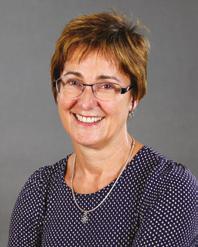

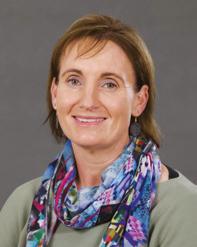










Anew report into the impact of the NSW government’s wage caps since their introduction in 2012, shows public sector nurses and midwives will each suffer a cumulative loss of $120,000 in pay by 2023–24, while their superannuation balances will be a further $12,500 worse off.
The report was written by Dr Jim Stanford, economist and director of the Centre for Future Work at the Australia Institute.
“By the 2021 to 2022 financial year, wages for an experienced nurse/ midwife working full-time were $335 lower per week – or about $17,500 for the year – as a result of these pay caps in place since 2012,” said Dr Stanford.
“On a cumulative basis, this wage suppression amounts to a combined loss of $80,000 in wages since the pay caps were first imposed.”
The impact of the wage caps has become especially acute with the steep rise in inflation, the report said.
“Real wages for nurses and midwives have already fallen over 3 per cent in the last two years, reducing their real purchasing power by $3000 per year per employee,” it said.
The initial justification for the wage caps was to reduce the deficits incurred by the government after the Global Financial Crisis of 2008–09.
The Australia Institute research shows those deficits were quickly replaced by large budget surpluses –which ran for six consecutive years from 2013–14 to 2018–19 – yet the wage caps were retained.
“It is clear the NSW Government relies upon harsh public sector pay restrictions as a matter of political and fiscal convenience, without negotiation or consideration of normal wage determinants such as rising cost of living, productivity, or wage comparators,” said Dr Stanford.
The pay caps have “contributed to falling real wages, made it more difficult to attract workers to vital service roles (in health care, education, and others), and has undermined wage growth across the broader labour market”.
“(They impose) an intolerable and unfair burden on the essential
service workers whose dedication and skill are critical to helping NSW residents through the continuing COVID-19 pandemic.”
“Arbitrary pay caps are also a clear violation of workers’ basic collective bargaining rights. They should be abandoned on both economic and democratic grounds.”
NSWNMA General Secretary, Shaye Candish, said the NSW Government’s wages policy was bad for nurses and midwives now, and into the future.
“NSW is the second-worst-paying state in Australia because of this policy, making it near impossible to attract and retain staff in such a tight labour market. It’s clearly a bad policy for nurses and midwives, but the implications for regional communities and the health sector overall are just as dire,” Shaye said. n
The Perrottet government’s wage caps have so far cost NSW nurses $80,000 each, left them exposed to an insecure retirement and damaged the national economy, according to a damning new report.
‘Arbitrary pay caps are also a clear violation of workers’ basic collective bargaining rights. They should be abandoned on both economic and democratic grounds.’
— the Australia Institute Centre for Future Work
By the 2021-22 financial year, wages for an experienced nurse/ midwife like Cj Porter from Campbelltown Hospital, working full-time, were $335 lower per week (or about $17,500 for the year) as a result of pay caps in place since 2012.

Cumulative Cost of NSW Public Sector Pay Caps is Enormous https://www.futurework.org. au/cumulative_cost_of_nsw_ public_sector_pay_caps_is_ enormous
In the 10 years since the pay caps were imposed, pay has grown at an average annual rate of just 2.19 per cent across all classifications.
In contrast, over the twenty years prior to the imposition of the cap, average wages grew at almost 4 per cent per year.
On a cumulative basis, wage suppression amounts to a combined loss of $80,000 in wages since the pay caps were first imposed.
If the pay caps are retained, those losses will cumulate further over the next two financial years: to $390 per week in lost wages and a cumulative loss of $120,000 per nurse by 2023-24.

By 2021–22, an experienced nurse or midwife had already lost over $1700 in superannuation contributions on top of the $17,500 reduction in their wages that year. Forecast forward, that loss of annual contributions swells to more than $2200 by 2023–24, according to the report by the Australia Institute.
After a decade of capped pay, super balances for experienced nurses and midwives were almost $7800 lower than if the pre-cap wage trajectory had been maintained. The loss grows quickly in future years – by 2023–24 the typical nurse or midwife will have lost over $12,500 in her or his super balance.
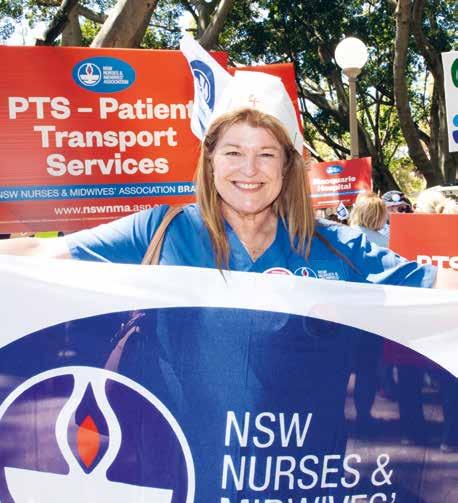
“As a result of the suppression of wages for public sector workers –made worse in real terms by the current surge in inflation – a growing proportion of the state’s essential service workforce will be unable to afford a comfortable retirement,” said the report.
This problem is compounded by the growing proportion of the population who have not been able to afford to purchase a home.
The report said the assumption that retirees own their homes outright is no longer realistic and will become even less so given the drop
in real wages, galloping inflation and sky-high property prices.
“Only homeowners who are members of a couple will be able to afford a comfortable retirement. For single women who rent, their superannuation accumulations under existing wage caps do not even meet half of the requirement for a comfortable retirement.
“In short, compensation practices in the public health system need to be enhanced substantially, if these well-trained, dedicated workers are to achieve the fitting reward of a decent and secure retirement.”
NSWNMA General Secretary Shaye Candish said that thanks to the NSW Government’s ongoing wage caps, most nurses and midwives will fall well short of the thresholds considered for a “comfortable” retirement.

“The Government’s wages policy further entrenches gender pay inequality, as most public sector workers are women.
“Nurses and midwives across NSW will be unable to retire in dignity, the longer these cruel wage caps remain in place.” n
What was originally billed as a temporary, emergency measure to help the state deal with fiscal deficits in the wake of the 2008–09 Global Financial Crisis, has become a permanent feature of wages policy governing public sector workers in NSW.
The state government initially imposed a cap on annual wage gains for workers in state-funded public services of 2.5 per cent in 2012–13, supposedly necessitated by the modest deficits incurred by the state after the GFC.
Those deficits were never large: they peaked at $1.7 billion in 2012–13 – equal to just 0.4 per cent of the state’s GDP that year.
And those deficits quickly disappeared due to the combination of fiscal austerity and renewed economic growth. In fact, starting in 2013–14 the state ran a series of six consecutive annual operating surpluses (amounting to a combined total of over $20 billion).
This had no impact on the state government’s draconian wages policy: the 2.5 per cent pay cap remained in place, even as the state racked up record surpluses that reached $5.7 billion in 2016–17 alone.
Later the government tried to justify the policy with reference to inflation – claiming they were intended to be consistent with the Reserve Bank’s target of 2.5 per cent annual inflation. But when inflation leaped well above that benchmark, the government quickly dropped that justification for the caps.
Dr Jim Stanford of the Australia Institute said the wages cap policy is motivated by ideology and politics, not fiscal necessity.
“After a decade of sustained pay suppression, in good years and in bad, it is now clear the government imposes these harsh restrictions on public sector pay, without free negotiation or consideration of normal wage determinants – like the cost of living, productivity, or wage comparators – as a matter of political and fiscal convenience,” he said.
A disturbing finding in the report is that the NSW wages cap policy has “since been mimicked by other states, by the Commonwealth Government and even by local and regional councils – all of which have been eager to dispense with normal collective bargaining mechanisms in order to achieve short-term fiscal savings”.
This, it said, has had damaging consequences for Australia’s economy. Specifically, it has led to “an unprecedented slowdown of wage growth across Australia’s labour market since 2013”.
“The NSW pay caps have had a particularly harmful impact on overall wage trends – not just in NSW, but across the country.”
“The NSW Government’s pay caps suppressed pay for all workers, not just its own employees – and helped set off a historical slump in wage growth that has bedevilled Australia’s macroeconomy ever since.” n
‘Nurses and midwives across NSW will be unable to retire in dignity, the longer these cruel wage caps remain in place.’
— NSWNMA General Secretary Shaye Candish
The wage caps were first imposed to reduce deficits incurred during the GFC. When the deficits were replaced by booming surpluses, the government justified the policy with reference to low inflation. Now that inflation is spiking they just impose them because they can.
As The Lamp went to press, Labor’s Secure Jobs, Better Pay legislation had passed the lower house of parliament but was held up in the Senate.
Big business was threatening to run a multi-million-dollar influence campaign aimed at blocking the bill or watering it down.
Business opposition ignores the fact that while corporate profits are at record highs, workers have endured years of wage stagnation and, in many industries, real wages cuts.
A Guardian newspaper poll of 1035 voters in November found majority support for key aspects of the bill.
The Australian Nursing and Midwifery Federation (ANMF) supports the bill because it is designed to benefit employees in low-paid, female-dominated sectors such as aged care.

Other sectors likely to benefit would include childcare, disability care and cleaning.
ANMF Federal Secretary, Annie Butler, said the existing wage bargaining system is outdated and unfair.
“Many of our members have been ‘locked out’ under the existing bargaining system and haven’t had a proper wage rise in years,” she said.
Annie said aged care staff working
conditions had “deteriorated to the point where more and more workers have abandoned their profession, leaving nursing homes dangerously understaffed.”
Meanwhile, inflation is racing ahead of wage rises.
The consumer price index rose 1.8 per cent in the three months to September to an annual rate of 7.7 per cent.
That means real wages fell over the year to September by an average of 4.2 per cent and even higher for public sector workers, the ACTU said. “Rather than spending millions of dollars on a scare campaign, big business should use that money to give their workers a pay rise instead,” ACTU Secretary, Sally McManus, said.
The current enterprise bargaining system requires employees to reach agreement with their employers.
Annie Butler, Secretary, ANMF
Labor’s new legislation makes it possible for workers in low-paid sectors to negotiate one pay deal across multiple employers.
New flexible work rules will benefit many women workers in particular. Employers will be legally required to try to reach agreement with “eligible” employees who request flexible work hours or arrangements.
Eligible employees are carers, parents with children of school age or younger, people with a disability, those aged 55 or older, and those experiencing or caring for someone experiencing domestic violence.
If the employer doesn’t bargain in good faith, unions can ask the Fair Work Commission to intervene.
The new laws will improve job security by placing new limits on rolling fixed-term contracts.
The federal Labor government is trying to pass new laws that will help low-paid workers to negotiate higher wage increases.
‘Many of our members have been locked out under the existing bargaining system and haven’t had a proper wage rise in years.’
—
This will mean “workers can’t be effectively put on an endless probation period,” said the Minister for Employment and Workplace Relations, Tony Burke.
Industrial relations expert Professor Shae McCrystal of the University of Sydney said the new laws are designed to empower women in the workplace.
“There’s a real engagement in the things that hold women back,” she told the Sydney Morning Herald , referring to measures to increase the bargaining power of sectors dominated by women. n
Registered nurse and NSWNMA member Glen O’Driscoll said he supports the Secure Jobs, Better Pay legislation because it aims to assist workers who are low paid and whose jobs lack pay progression.
Glen works in aged care, where, he said, enterprise bargaining agreements have tended to deliver both low hourly pay rates and inadequate pay progression (pathways to higher pay levels).
“Pay increases under enterprise agreements have not kept up with cost-of-living increases,” he pointed out.
“Enterprise bargaining has not worked well for low-paid workers in generally femaledominated sectors such as aged care and childcare.
“The work of low-paid workers is not fairly valued and real wages have been eroded. The working poor are getting poorer and more socially disadvantaged.”
Along with measures to lift wages, the legislation also limits fixedterm contracts, to make it easier for casuals to gain permanency.
“Casual employment and termlimited casual employment contracts do not provide fair work value and tenure is uncertain,” Glen said.
As The Lamp goes to print the Albanese Government’s IR laws have been passed in the Senate.
“Casual workers doing a full-time workload are financially and socially disadvantaged when seeking housing loans from bank lenders, who see it as high-risk lending.”
He said low pay motivates aged care workers – particularly casuals – to seek better pay rates by working for nursing agencies.

“This creates further staff shortages within the enterprises they leave. The enterprise plugs the resulting gaps in the staff roster by hiring agency casuals.
“It is common for an aged care worker to find themselves working side by side with a casual agency worker, doing the same work and being paid substantially less than the agency worker.
“This is a ridiculous waste of taxpayer’s money.”
Glen said the Secure Jobs, Better Pay legislation will “allow all aged care employees whether casual or full-time, to have their collective interests represented, advocated, and negotiated no matter which enterprise(s) they work for.”
“Care workers whose enterprise is acquired by another provider operating under a separate enterprise agreement can use the multi-employer bargaining framework to trigger renegotiation of the value of their work.
“This trigger is especially useful when the new owners re-designate lower-skilled workers to perform higher-value work encompassing a broader range of duties and skill sets.
“It's time to give workers a voice in the valuation of their work,” he added. “We need to support these workplace reforms.”
n
‘It’s time to give workers a voice in the valuation of their work.’
— Glen O’Driscoll
After nine years of Coalition government neglect, and tireless union campaigning, Labor has delivered on its election commitments for aroundthe-clock nursing care and more time for care in homes.
Meanwhile, the Fair Work Commission has approved a 15 per cent increase in award wages, with the prospect of more to come.
“None of this would have been possible without nurses who provided evidence to the commission and those who campaigned for fair wages in the sector,” said NSWNMA General Secretary, Shaye Candish.

“There is still more work ahead, but we are making real progress.”
Many aged care workers are in line for a substantial pay rise after the Fair Work Commission (FWC) ordered a 15 per cent interim increase to award rates.
The increase applies to nurses and care workers who are paid minimum award rates under the Nurses Award; Aged Care Award; and Social, Community, Home Care and Disability Services Award
The FWC said a 15 per cent interim increase for direct-care workers was “plainly justified by work
value reasons”.
Unions, including the Australian Nursing and Midwifery Federation (ANMF), had applied for a 25 per cent wage increase, arguing that the work of aged care workers had never been properly valued and was significantly undervalued.
When The Lamp went to press, the FWC had not yet decided when the increase would be paid.
It said it would consider possible further increases for these directcare workers, and whether to also grant a pay rise to aged care administrative and support staff.
NSWNMA General Secretary Shaye Candish said workers on minimum award rates will get the full 15 per cent increase.
Members employed under enterprise agreements will also get an increase if the award rate of pay goes above
their current enterprise agreement.
“However, most nurses employed under an enterprise agreement are already paid more than 15 per cent above the award rate, so it is unlikely this interim increase will apply to them,” she said.
“Nonetheless, we will be seeking increases to wage rates in all enterprise agreements when existing agreements expire.”
The federal Labor government welcomed the FWC decision and reaffirmed its commitment to fund the pay rise in full.
“A wage rise for aged care workers is not just the right thing to do, it is a smart thing to do,” Minister for Aged Care, Anika Wells, told parliament.
“For some aged care workers, after literally decades in the job that they love, they are about to crack the
‘We will be seeking increases to wage rates in all enterprise agreements when existing agreements expire.’
— Shaye Candish, NSWNMA General Secretary
The NSWNMA’s long battle for a better deal for aged care workers is starting to pay off.
$30-an-hour barrier for the very first time.”
Treasury modelling accompanying the government’s submission to the FWC said a 25 per cent wage rise could boost labour supply by between 5 per cent and 10 per cent.
Workplace Relations Minister, Tony Burke, said the result signified a first step in changing the undervalued nature of aged care work.
“We fought for this pay rise because our government is committed to getting wages moving again, particularly in low-paid, femaledominated industries like this one,” Burke said.
Women make up about 80 per cent of the aged care workforce.
The commission said in its decision that “gender-based undervaluation of work in Australia arises

from social norms and cultural assumptions that impact the assessment of work value”.
It added: “The disproportionate engagement of women in unpaid labour contributes to the invisibility and the under-recognition of skills described as creative, nurturing, facilitating or caring skills in paid labour.”
Aged & Community Care Providers Association’s CEO, Tom Symondson, welcomed the decision but noted it did not cover staff who are not involved in direct care such as kitchen, laundry, recreation activities and administrative workers.

“We look forward to a further decision by the commission that addresses their pay,” he said.
In October, federal parliament passed new aged care laws to increase the amount of direct-care that residents receive and to guarantee an RN onsite 24/7.
Labor’s October budget included an additional $3.9 billion to pay for these and 21 other recommendations of the aged care royal commission. The new laws increase the number of care minutes residents receive –200 minutes including 40 from RNs – from 1 October 2023 and 215 minutes – including 44 from RNs – from 1 October 2024. They also require aged care homes to have an RN onsite 24/7 from 1 July 2023. These two reforms alone will cost $2.5 billion over four years.
ANMF Federal Secretary, Annie Butler, said the “significant investment” was “the first step to fixing the troubled aged care sector”. n
n
‘A wage rise for aged care workers is not just the right thing to do, it is a smart thing to do.’
— Minister for Aged Care, Anika Wells
‘The first step to fixing the troubled aged care sector.’’
— Annie Butler
$2.5b for extra staffing
Aged care workers, including NSWNMA members, are praised by government ministers and other MPs in federal parliament.
Adelegation led by the Australian Nursing and Midwifery Federation (ANMF) – the national union body, which includes the NSWNMA – went to Parliament House in Canberra in October to lobby for the Aged Care Bill, which is now law.
During debate on the bill, Labor, Greens and independent MPs praised the ANMF and individual nurses for their hard work to achieve reform.
Aged Care Minister, Anika Wells, said that “seven proud ANMF nurses” and two United Workers Union aged care workers had met with parliamentarians “to tell us what it is like in aged care.”
She added: “I know that people here would want me to acknowledge Glen, Stephanie, Sharon, Stuart, Alison, Rachel and Juliane, who came to tell us, and the frontline workers who are watching on, and really hoping that we act as swiftly as we have so far.
“Thank you for all those shifts that you did in PPE. Thank you for all those times that you came in on your day off because there was no-one else to do it.
“Thank you for all those times that you stopped and held a hand and checked in and cared, even though you had 67 other things that you needed to be doing.
“We see you and we thank you and we recognise you, and today we made laws in this place that value your work.”
Labor Senator Murray Watt, the agriculture minister, thanked ANMF officials and singled out NSWNMA member Glen O'Driscoll, whom he described as “an aged care nurse who I know has been very involved in the discussions around this bill.”

Senator Watt continued: “Thank you for representing the many thousands of nurses who work in aged care and have needed, for a long time, a government that backed them and provided the support that they deserve so they can fully care for our older Australians, and thank you for your participation in this really important bill.”
Greens Senator Janet Rice praised the ANMF for its “crucial advocacy and commitment” to aged
care reform.
She thanked Glen O’Driscoll and fellow NSWNMA member Stephanie Sullivan, who were part of the nurses’ delegation to parliament.
Senator Rice said: “One of the things he (Glen) said to me yesterday stuck with me. He said the number one thing that was going to make a difference to the older people he cares for was having more eyes, more feet and more hearts on duty.”
Independent Senator David Pocock also acknowledged the work of the ANMF and the nurses who came to Canberra to lobby MPs.
“We’re now realising what a precious resource nurses are and how much catch-up work we need to do to value them,” Senator Pocock said. n
‘We’re now realising what a precious resource nurses are and how much catch-up work we need to do to value them.’
— Independent Senator David Pocock
Aged care worker Susan Walton will never forget the day she made Barnaby Joyce cry.
Susan is an NSWNMA member and assistant in nursing at an NSW aged care facility.
She met Joyce, the National Party leader, as a member of a union delegation to parliament house, Canberra, to lobby for aged care reform in 2021.
“I went to Joyce’s office with another aged care worker from Queensland,” Susan said.
“Joyce started by saying his father didn’t have to worry about a nursing home because he was being cared for at home by Joyce’s sisters, who are nurses, and his brother, a doctor.
“I said, that’s fantastic, but I invite you to come to my facility for a couple of hours and see me trying to look after six people like your father.
“And you can tell me which one you’d like me to go to first.
“The one on the floor who’s fractured his hip, the one who’s demented and attacking a resident, the one who’s soiled himself while waiting to go to the toilet, the one in extreme pain who needs his medication, or the one who’s walked out the door and wandered off?
“As I described the conditions at the nursing home he got upset and the tears started.
“He offered to organise a meeting for us with all National Party MPs and kept his promise. I couldn’t attend the meeting but some of my colleagues went back to Canberra for it.”
Susan has been lobbying for aged care reform for more than a decade and gave evidence to the aged care royal commission in 2019.
She has lobbied MPs in Canberra and at state Parliament House in Sydney, given TV interviews and campaigned for aged care reform during state and federal elections.

In the process she’s made “wonderful friendships” with other union members.
Susan describes the Labor government’s recent aged care reforms and Fair Work Commission wage increase as “light at the end of the tunnel”.
“We are getting closer to achieving a better and fairer system, but it won’t come overnight,” she says.
“The extra care minutes from October next year should mean more staff on the floor and more
RN time with residents.
“It will be up to unions and workers to make sure providers enforce the new rules.
“At my facility we currently have one RN responsible for 120 people at night.”
Susan says the 15 per cent award wage increase must be followed by increases to above-award enterprise agreements like the one covering her workplace, which pays $26.90 an hour.
“The low money and constant understaffing are causing people to leave in droves.
“It’s a hard job and you’ve got to be a caring person to do it. Not many are going to do it for $26.90 an hour.
“They’ve got to bring back conditions as they were when I started 19 years ago – before Prime Minister John Howard changed the aged care laws to remove accountability from providers as to how they spend taxpayers’ money.
“That’s when everything fell apart.” n
House of tears
Susan Walton is among a dedicated band of workers who fronted the union push for aged care reform.
‘We are getting closer to achieving a better and fairer system, but it won’t come overnight.’
— Susan Walton, AiN
Located adjacent to Darling Harbour in the heart of Sydney’s CBD, Hyatt Regency Sydney is Australia’s largest upscale hotel perfectly suited to those seeking a weekend away.

Within walking distance to theatres, museums, galleries and luxury shopping precincts guests can experience some of the city’s best attractions within minutes. Hyatt Regency Sydney is the perfect place to work, rest and play. To book visit hyattregencysydney.com
The Lamp is offering members the chance to win two nights’ accommodation in a Harbour View King Room with breakfast daily*


When the sun’s shining and the ocean is sparkling, you'd be hard-pressed to find a more beautiful city in the world than Sydney. The best way to experience the Harbour in all its glory, is onboard the newest and most luxurious vessel, The Jackson.

We have partnered with The Jackson and are offering you the chance to win one of two double passes to Rosé Sunday Brunch on board The Jackson (each double pass valued at $310).
The lavish Rosé Sunday Brunch features a sweet and savoury menu designed to delight, live entertainment and bottomless Chateau D'Esclans Whispering Angel and Chandon Brut Rosé. To book your Rosé Sunday Brunch, visit www.thejackson.com.au































Thanks to Member Advantage, you could win a $100 WISH eGift card . Shop at a wide range of stores including Woolworths, BIG W, BWS, Dan Murphy’s and participating Caltex Woolworth petrol stations. With no expiry date, you can shop at any time.































The Lamp and eNurse are offering you the chance to win a $250 voucher – imagine yourself in new scrubs, new shoes and accessories!

ENJOY 10% OFF* ALL YOUR ONLINE PURCHASES EXCLUSIVE TO NSWNMA MEMBERS. Simply use code NSWNMA10OFF at checkout www.enurse. com.au
To be in the draw to win one of these fabulous prizes email your entry with subject: Christmas giveaway (prize) to lamp@nswnma.asn. au including your name and membership number. A separate email is required for each prize.
IMPORTANT: One entry per member for each prize will be accepted. Entries must indicate which prize you would like to win in the email subject.
*Conditions apply. Competition entries from NSWNMA members only and limited to one entry per member per prize. All entries must be received by Wednesday, 4 January 2023 with prizes drawn Thursday, 5 January 2023. Hyatt Regency Sydney: rooms subject to availability. Prize must be redeemed by 13 June 2023 (not valid during long weekends, public holidays or major event periods). Voucher is non-transferable, not redeemable for cash and must be presented on arrival. The Jackson: not valid in conjunction with any other offers / promotions and cannot be used on special event cruises. Subject to availability and vouchers to be redeemed by 12 February 2023. eNurse: excludes books, Littmann Stethoscopes, Fashion Biz and specials. Not valid in conjunction with any other offers or promotions. Offer valid until 31 March 2023.
Wishing our members a holiday season full of peace, joy, and happiness. We invite you to be part of this year's giveaway.


















Seven Islands Skincare and The Lamp are offering you the chance to win a self care Christmas bundle (valued at $99). This stunning pack contains all-natural hand & body wash, body lotion, the perfect body scrub and beautifully scented allnatural soy wax candle.


Seven Islands Skincare is a holiday for your skin every day. Give your skin a break from chemicals, synthetics, pollution, and stress. Beauty Therapist formulated, allnatural and hand made.


EXCLUSIVE TO NSWNMA MEMBERS! 25% OFF until midnight 21 December 2022. Simply use code NSWNMA22 online at www. sevenislandsskincare.com.au


Koh Living have created artinspired gifts that are both meaningful and great value. When you give a lovedone a unique gift from Koh Living you can be sure it will be loved and used for years to come.
We have two festive floral packs valued at $129.80 each to giveaway and 5 Anna Blatman bauble boxes valued at $44.95 to giveaway.

Head to www.kohliving.com.au to discover gifts by established Australian and International artists and show your loved ones you care this Christmas.



We have three packs (of three books each) to give away: Moonlight and the Pearler’s Daughter by Lizzie Pook (Penguin Random House): as the pearling ships return to Bannin Bay, twenty-yearold Eliza Brightwell nervously awaits the arrival of her father’s boat, only to learn that hehas gone missing at sea.

Fully Human: a new way of using your mind by Steve Biddulph (Pan Macmillan Australia): what if there were parts of our minds that we never use, but if awakened, could make us so much happier, connected, alive and bringing peace to the conflicts and struggles we all go through?

Dear Mum edited by Samuel Johnson OAM (Hachette Australia): a warm and emotional assembly of letters from some of Australia’s most notables celebrating motherhood.


Located just outside of Blacktown, Featherdale Sydney Wildlife Park is home to the largest collection of Australian wildlife in the world. Over 2,000 Australian animals across 260 species call Featherdale home.
Come and hand feed wallabies and kangaroos, or book a private wildlife encounter with a quokka, a tree kangaroo and so much more. Book today www.featherdale.com.au
Win one of 2 x family passes to Featherdale Sydney Wildlife Park**

Located just outside of Batemans Bay, enjoy a close-up experience with exotic and endangered animals at Mogo Wildlife Park.
We have 2 x family passes to Mogo Wildlife Park to giveaway**


Enjoy feeding deer, camels, ostriches and the largest giraffe family in NSW, or book a personal encounter with a meerkat or a red panda. Book today www.mogowildlifepark.com.au
Stunning views, picturesque picnic areas, awesome immersive experiences with exotic and native wildlife – get closer to nature at Hunter Valley Wildlife Park. Book an up close and personal encounter with a tamarin or marmoset today www.huntervalleyzoo.com.au
Win one of 2 x family passes to Hunter Valley Wildlife Park**

**Conditions apply. Family passes include 2 adults and up to 4 children. Tickets are valid for one single day use per family pass only. Unless otherwise stated, fees for food, merchandise, locker rentals, special concerts or events are not included in the passes. Prices and product offerings are subject to change without notice.

The launch of this joint venture commenced in 2020 and will continue in 2022 and 2023 allowing the nurses and midwives of NSW to undertake the Certificate IV Program with their peers. The program is delivered in 12 days over a period of 9 Months. Our online program is still running for those that cannot attend the face-to-face workshops.

This program is designed for vocationally qualified or skilled individuals who are seeking a career as a Trainer and/or Assessor in their field of expertise. This may be in a formal Vocational Education & Training (VET) environment, such as an RTO or TAFE Institute, or in a workplace or other corporate environment. It is designed to build knowledge and skills in a logical sequence, with a deep but broad overview of the sector upfront so that participants get an early and realistic insight into what a career in VET will entail.
Participants who successfully complete this program will develop the skills and knowledge required to confidently and competently:
• Work within an accredited, competency-based training framework
• Work within the Vocational Education & Training quality framework
• Design, develop and deliver engaging group training programs
• Design and develop robust and rigorous assessment tools
• Plan and conduct assessments of competence of individuals
Virtual
Face-to-Face program:
The NSW Nurses and Midwives’ Association is seeking members to join the Midwifery Reference Group.

The group meet 4-6 times per year to discuss current issues and challenges in the midwifery sector. Meetings are held in a blended Zoom/faceto-face format to allow members to be involved regardless of geographical location.
Current NSWNMA midwifery members are invited to join.
Being a member of the Midwifery Reference Group gives you the opportunity to:
be a voice for the issues impacting midwives and the midwifery profession

assist in the development and reviewing of policies
be a link between members and the Association
MORE INFORMATION + EXPRESSION OF INTEREST: email education@nswnma.asn.au
The NSW Nurses and Midwives’ Association is seeking members to join the Climate Change Action Reference Group.
The group will meet 4-6 times per year to discuss current issues and challenges the climate crisis has on the nursing and midwifery professions.

Meetings are held in a blended Zoom/face-to-face format to allow members to be involved regardless of geographical location.
Being a member of the Climate Change Action Reference Group gives you the opportunity to:
be a voice for the climate issues impacting nurses, midwives and the profession
assist in the development and reviewing of policies
be a link between members and the Association MORE INFORMATION + EXPRESSION OF INTEREST: email education@nswnma.asn.au
Current NSWNMA members who work in, are involved with or have an interest in climate action are invited to join.
Aged care is finally having its day … and about time.
Don’t believe those who say that a change of government won’t make a difference!
Admittedly we are all too often disappointed in all political parties and governments from time to time. But in the sphere of aged care, the current Commonwealth Government has hit the ground running. Legislation has been passed introducing the need for registered nurses to be on duty and on site around the clock from 1 July 2023. It is moving to legislate nurse and care minutes per resident. The work value case to increase the minimum pay rates in aged care has recently resulted in a 15 per cent interim wage increase. The Commonwealth Government has stated it will fund any increase.
For decades, aged care has been neglected or worse; decisions made that often led to a race to the bottom in wages and the care provided. It was only through member persistence, and an unwillingness to yield, that a spotlight continued to be shone on the sector. The next 12 to 18 months will see changes introduced and bedded down that will transform the aged care sector in a way that was unthinkable only a year or two ago. There is still plenty to do, but let’s take a moment to check out the aged care report card below and be quietly satisfied that all the hard work of campaigning, and keeping up the good fight when it seemed for no purpose, has finally delivered some tangible change and real optimism about the future.
When it comes to your rights and
at work, NSWNMA General Secretary Shaye Candish has the answers.

What is the work value case about?
The Association and Health Services Union (HSU) made applications to the Fair Work Commission (FWC) to vary the Nurses Award 2020, the Aged Care Award 2010 and the Social, Community, Home Care and Disability Services Industry Award 2010. Often called Modern Awards, these set out the safety net that wages cannot go below.
The fundamental ask was to increase rates of pay in these three awards for those working in aged care and home care by 25 per cent based on work value. So, what was the decision?
The FWC determined in an “interim decision” that a 15 per cent wage increase was justified on work value grounds for those working in direct care under the three awards.
Why did the FWC call it an interim decision; can they take the increase back?
The FWC called it an interim decision only because it did not necessarily exhaust the full claim for 25 per cent. Further evidence and hearings will be heard next year, so, 15 per cent now, with more to possibly follow.
When does this increase get paid?
This is yet to be determined. In what the FWC is calling Stage 2, discussions commenced
at the end of last month to work out how and when the 15 per cent increase will be paid. The FWC was keen to hear from the Commonwealth Government as to what funding would be made available.
Does this mean that all nursing classifications will get this increase?
Not necessarily. The increase of 15 per cent is being applied to the “safety net” minimum pay rates contained in the Nurses Award 2020. So, if you are employed in aged care on this award, then yes, you will receive this increase in full.
But if you are on an enterprise agreement, your rates of pay will only be increased to make sure you do not receive less than the new pay rates in the Nurses Award 2020 after the 15 per cent increase has been added in.
So, if my agreement rate is higher, I won’t receive an increase?
At this stage, that is correct. If your enterprise agreement rate of pay remains higher than those in the adjusted award, you will not receive an increase as your wages remain higher than the safety net rate.
But this interim decision (along with any others in Stage 3) lifts the wages floor and will set the future base that wages will be negotiated on for enterprise agreements. What happens next?
The interim decision was Stage 1. In Stage 2, how and when the 15 per cent increase is to be paid will be sorted out. Then comes
Stage 3, which will consider further increases for direct care workers and what increase, if any, will be provided to nondirect care workers.
Should we be satisfied with this outcome?
The 15 per cent interim increase is a good first step, but more still needs to be done to better recognise and reward the efforts of nurses in aged care or home care.

What has the Commonwealth Government done about its promises in aged care?
Firstly, the government intervened in the work value case and supported a wage
increase and committed to funding any increase. It has also already delivered on its promise to pass a law that residential aged care facilities will need to ensure that there is at least one nurse on site, and on duty at all times from 1 July 2023. Finally, after years of campaigning, we’ll have RNs 24/7! While an exemption process is available, it contains several checks and balances.
How will the exemption process work, and will it be too easy to get one?
The law requires approval of an exemption by the Secretary of the Commonwealth Department of Health. No exemption can


last longer than 12 months.
If an exemption is granted, the Secretary must make public the name of the provider and the facility, the period for which the exemption is in force, and any conditions that have been applied to the exemption. So there are a few hoops to jump through and there is transparency in the process.
More work is happening about RN minutes and care minutes per resident. But this is already a significant step forward and beyond anything promised by the previous government.








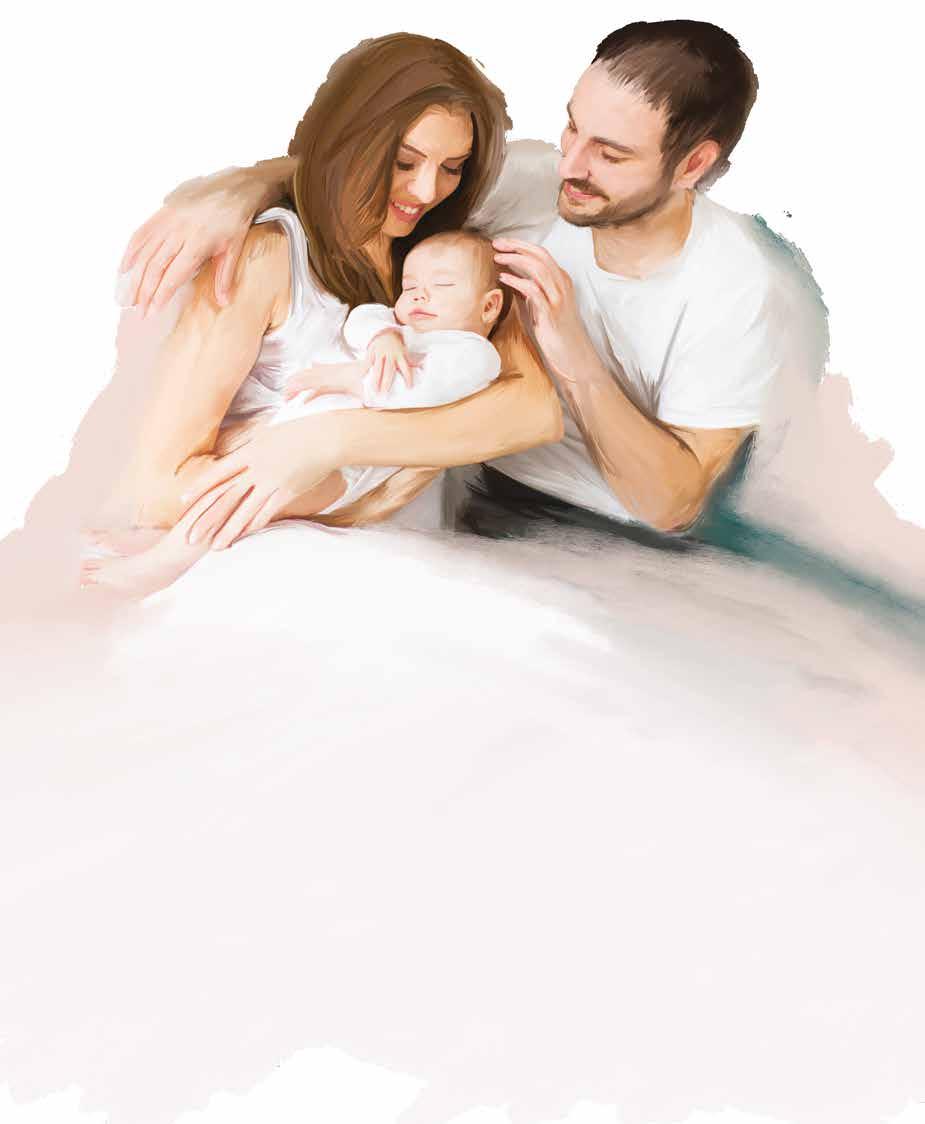
Nearly 80 per cent of the estimated 70 million people around the world who fell into extreme poverty at the onset of COVID-19 in 2020 were from India, a recent World Bank report has revealed.

Renowned Indian economist Jayati Ghosh said COVID was “undoubtedly India’s worst health calamity in at least a century”. But she said the pandemic’s consequences go beyond the direct effects on health and mortality.
“There were very significant policy failures – owing to government action and inaction – that were responsible for widespread and significant damage to Indian livelihoods and for the country’s decline in terms of many basic indicators of economic well-being,” she wrote in the online journal Project Syndicate.
She said that while the country already suffered from glaring inequalities of income, wealth, and opportunities long before COVID-19, the government’s pandemic response has taken them to “unimaginable extremes”.
“Even as Indian workers faced poverty, hunger, and ever-greater material insecurity due to the pandemic, money and resources continued to flow from the poor and the middle class to the country’s largest corporations and wealthiest individuals.
“At the heart of India’s self-inflicted economic catastrophe is the government’s decision to provide very little compensation or social protection, even as COVID-19 lockdowns deprived hundreds of millions of their livelihoods for several months.”
300,000 members of the Royal College of Nursing (RCN) have voted for a first ever national strike, which is expected to take place before Christmas.
The RCN said the government has failed to address a workforce crisis and that the “exploitation of nursing staff cannot be tolerated any longer”, the Guardian reported.
An analysis by the Nuffield Trust published earlier this year found that 40,365 nurses quit the National Health Service in the year to June 2022 – equivalent to one in nine.

The RCN said that since the Conservative Party took power in 2010, the pay of some experienced nurses has fallen by 20 per cent in real terms. They have called for a pay award rise of 5 per cent plus inflation – a total of about 15 per cent.
Pat Cullen, RCN general secretary and chief executive, said: “Patients are at great risk when there aren’t enough nurses. Huge numbers of staff – both experienced and newer recruits – are deciding they cannot see a future in a nursing profession that is not valued nor treated fairly. “Our strike action will be as much for patients as it is for nurses – we have their support in doing this.”
Unison – the other major union in the NHS – is also balloting its 350,000 members, including porters, nurses, paramedics and cleaners, about strike action in England, Wales and Northern Ireland.
‘At the heart of India’s self-inflicted economic catastrophe is the government’s decision to provide very little compensation or social protection.’
‘The exploitation of nursing staff cannot be tolerated any longer.’ — Royal College of Nursing
Climate change is already killing us, but strong action now can prevent more deaths, said the World Health Organization.
“We are in the fight of our lives and we are losing. And our planet is fast approaching tipping points that will make climate chaos irreversible,”
UN Secretary General António Guterres said at the opening of the COP27 UN climate summit in Egypt.
“We are on a highway to climate hell with our foot on the accelerator.”
The World Health Organization (WHO) said COP27 is especially critical for people’s health across the globe.

“Governments must demonstrate far stronger political will and faster action in implementing the legally binding global Paris Agreement on climate change,” it said.
WHO said it has “long sounded the alarm, but action has been dangerously inconsistent and far too slow” on climate change.

WHO Regional Director for Europe, Dr Hans Kluge, said the world had “witnessed an escalation of heatwaves, droughts and wildfires, all of which have impacted the health of our people”.
Europe, he said, had just experienced its hottest summer and hottest August on record, with devastating wildfires and elevated pollution that had “killed many people, displaced many more, and destroyed large swaths of land for several years to come”.
“It is estimated that at least 15,000 people died (in Europe) specifically due to the heat in 2022.”


The health costs of financial hardship and inequality – on the increase as the cost of living skyrockets – constitute a public health crisis, according to academics.
The health costs of economic disadvantage are “startling”, said researchers from the School of Public Health, University of Sydney. A 2021 Australian Burden of Disease study found the most disadvantaged 20 per cent of Australians die four to six years earlier than the least disadvantaged.
One-fifth of the country’s ill-health would be avoided if everyone enjoyed the same socioeconomic circumstances as the top 20 per cent.
People in poorer socioeconomic circumstances do worse across almost all health measures. This includes life expectancy, noncommunicable diseases (such as heart disease, diabetes), injuries and, as the COVID pandemic has revealed, infectious diseases. The health burden of intimate partner violence is two-and-a-half times higher in the poorest 20 per cent compared with the most advantaged 20 per cent of households.
The researchers said Australia’s response to the COVID pandemic shows it is possible to mobilise resources and political will in the face of a public health crisis.
“There is plenty of scope to improve this inequality by lifting benefit levels to keep Australians out of poverty. (It) requires a collective commitment to ‘levelling up’ society,” they wrote in The Conversation
Family and Domestic Violence leave is now a universal right in Australia.
Years of campaigning by unions have led to Family and Domestic Violence leave being embedded in awards for more than 2.6 million workers.
Now the Albanese government has enshrined it in law, making it a universal entitlement and extending coverage to another 8.44 million workers, including casuals.
The ACTU said that, on average, it costs $18,000 to escape a violent relationship in Australia and economic security is a key factor determining whether a person can escape a dangerous relationship.

Paid Family and Domestic Violence leave will save lives, it said.
“No worker should ever have had to choose between putting food on the table and their safety, and economic security is a key factor determining whether a person subjected to violence at home can escape a dangerous relationship or not,” said ACTU President, Michele O’Neil. “It cannot be understated just how important winning paid Family and Domestic Violence leave in the National Employment Standards is.”
The new law followed on the heels of a commitment by the Albanese government in the federal budget to dedicate $42.5 million to the implementation of the Respect@Work report, which outlines a new model for dealing with sexual harassment at work.
‘One-fifth of the country’s ill-health would be avoided if everyone enjoyed the same socioeconomic circumstances as the top 20 per cent.
‘ No worker should ever have had to choose between putting food on the table and their safety.’
— ACTU President, Michele O’Neil
There were four big spending commitments on health in the federal budget: aged care, Medicare reform, pharmaceuticals, and Aboriginal health.
The budget announced additional annual health and aged care spending of more than $2.8 billion when initiatives are fully implemented by 2025–26. The bulk of this is for policy initiatives flagged in the election campaign.

Labor promised several health reform initiatives before the election. One of these – the development of urgent care clinics – is now on track to start in 2022–23, at a cost of $37 million per year.
The budget allocated $230 million in a full year to reduce the mandatory Pharmaceutical Benefits Scheme co-payment, from the current level of $42.50 per prescription for general beneficiaries to $30.
There was an additional investment of $95 million in a full year to improve the health of Indigenous Australians.
Professor Stephen Duckett from the School of Population and Global Health at Melbourne University said this commitment to Indigenous health “appears well designed and includes improved infrastructure, expanded training and new health clinics”.
Professor Duckett said the budget adopted a broader view of health and wellbeing than seen in previous budgets.
“The budget signals the first steps towards adopting a new health and wellbeing framework for measuring societal progress, incorporating broader aspects of everyday life into budget reporting,” he wrote in The Conversation
Workers are taking to the streets to protest high energy prices and mounting costs of living.
Nurses, pilots, postal workers, railway staff and others have walked off the job throughout Europe – all seeking wages that keep pace with inflation, which has soared since the beginning of the war in Ukraine.
In Britain, nurses have voted en masse to go on strike, there were three days of strikes by tens of thousands of railway workers and more than 700 airport workers at Heathrow airport voted for a three-day strike last month.
In France, November also saw a nationwide day of walkouts and protests by train drivers, teachers and other public sector workers demanding government and employers increase salaries to keep up with inflation.
One protester, Victor Mendez, told France 24 : “We all feel personally affected. Families are having a hard time buying a carton of eggs, or bread or even meat. That’s not possible in France, one of the world’s richest economies,” he said.
In Germany, unions across Europe’s biggest economy are demanding higher wages to compensate for rising inflation. Giant union IG Metal called on thousands of workers to strike across 15 key sites, including Airbus in Hamburg. There have also been waves of strikes and massive rallies in Spain, Belgium, Greece and the Czech Republic.

‘Families are having a hard time buying a carton of eggs, or bread or even meat.’
— Victor Mendez, Paris
‘The additional funding in indigenous health “appears well designed and includes improved infrastructure, expanded training and new health clinics’
— Professor Stephen Duckett
The financial statements of the Australian Nursing and Midwifery Federation New South Wales Branch have been audited in accordance with the provisions of the Industrial Relations Act, 1991 and the following summary is provided for members in accordance with Section 517(2) of the Act, as applied by section 282(3) of the Industrial Relations Act, 1996.
A copy of the Financial Statements, including the independent Audit Report, will be supplied free of charge to members upon request. Certificates required to be given under the Act by the Committee of Management have been completed in accordance with the provisions of the Act and contain no qualifications.
THE YEAR ENDED 30 JUNE 2022
Service fee –NSW Nurses and Midwives’ Association (NSWNMA)
2022 ($) 2021 ($)
27,000,000 25,050,091
Interest income 31,635 53,836 Other income 212,542 569,632
Total income 27,244,177 25,673,559
Less total expenditure (26,863,281) (24,688,916)
Result for the year 380,896 984,643
Remeasurement of retirement benefit obligations 378,358 426,610
Total comprehensive income for the year 759,254 1,411,253
SUMMARY BALANCE SHEET AS AT 30 JUNE 2022
Total equity 2,564,193 1,804,939
Represented by:
Current assets 6,820,682 7,765,857 Non-current assets 5,786,857 4,241,732 Total assets 12,607,539 12,007,589
Current liabilities 9,631,622 9,256,778
Non-current liabilities 411,724 945,872
Total liabilities 10,043,346 10,202,650
Net assets 2,564,193 1,804,939
In accordance with the requirements of the Industrial Relations Act, 1991 [NSW] the attention of members is drawn to the provisions of Sub-Sections (1) and (2) of Section 512 which read as follows:
(1) A member of an organisation, or the Industrial Registrar, may apply to the organisation for specified information prescribed by the regulations in relation to the organisation.
(2) An organisation must, on the making of such an application, make the specified information available to the member or the Industrial Registrar in the manner, and within the time, prescribed by the regulations.
The summary financial statements, which comprise the summary balance sheet as at 30 June 2022 and the summary statement of profit or loss and other comprehensive income for the year then ended are derived from the audited financial report of Australian Nursing and Midwifery Federation New South Wales Branch for the year ended 30 June 2022. In our opinion, the accompanying summary financial statements are a fair summary of the audited financial report.
The summary financial statements do not contain all the disclosures required by Section 510 of the Industrial Relations Act, 1991 [NSW] or Australian Accounting Standards. Reading the summary financial statements and the auditor’s report thereon, therefore, is not a substitute for reading the audited financial report and the auditor’s report thereon.
We expressed an unmodified audit opinion on the audited financial report in our report dated 11 October 2022. Our Independent Auditor’s Report to the members on the Financial Report did not contain any particulars of any deficiency, failure or shortcoming as referred to in the Industrial Relations Act 1991 [NSW], as applied by Section 282(3) of the Industrial Relations Act, 1996.
The Committee of Management is responsible for the preparation of the summary financial statements.
Our responsibility is to express an opinion on whether the summary financial statements are a fair summary of the audited financial report based on our procedures, which were conducted in accordance with Auditing Standard ASA 810 Engagements to Report on Summary Financial Statements
Michael Mundt Partner
11 October 2022, Wollongong
Liability limited by a scheme approved under Professional Standards Legislation
A copy of the Financial Report, including the Independent Audit Report, is available to members on the Member Central portal accessed via www.nswnma.asn.au. Members can obtain a hard copy by emailing the Branch Secretary, ANMF (NSW Branch) at gensec@nswnma.asn.au or calling 1300 367 962.
ACROSS 1. Clumping together of red blood cells (17)
Quest, search (7)
A flat elevated segment of a graphic record (7)
Urokinase (1.1)
An involuntary trembling of the body or limbs (6)
Emphysema index (1.1)
Slogan (5)
The most prominent waveform found in the electroencephalogram (5.6)
A part or portion (5)
Toll-Like Receptor (1.1.1)
Antipsychotic agent (5.12)
Thirteenth letter of the Greek alphabet (2)
Lacking cellular organisation (11)
Mental activity during sleep (5)
A thin weblike structure or tissue (4)
Being alive or living (11)
A nutrient-dense fruit, high in monounsaturated fats (7)
Formatted (a computer) (11)
Chemicals within the nervous system that transmit information from or between nerve cells (17) DOWN 1. Nutritional intake in excess of normal (17)
A PPE item (4)
Any visible enlargement of the thyroid gland (6)
Stoic (11.6)
Improvised (9)
Tocsin (5.9)
Unskillfulness from a lack of training (9)
Von Recklinghausen disease (17)
The buttock (4)
Having or formed by three planes meeting at a point (9)
Accumulate, increase (6)
Pigmented part of the eye (4)
An instrument for measuring the size and configuration of the kidneys and other organs (9)
Infectious Disease Research Laboratory (1.1.1.1)
A thin cartilaginous strip on the underside of the tongue of some mammals (5)
Sediment (7)
Otalgia, otodynia (7)
Unhappy (3)
Leucocyanidin reductase (1.1.1)






























Yeva Skalietska Bloomsbury Publishing RRP $19.99: ISBN 9781526659934

Everyone knows the word 'war'. But very few understand what it truly means. When you find you have to face it, you feel totally lost, walled in by fright and despair. Until you’ve been there, you don’t know what war is.
This is the gripping, urgent and moving diary of young Ukrainian refugee Yeva Skalietska. It follows twelve days in Ukraine that changed 12-year-old Yeva's life forever. She was woken in the early hours to the terrifying sounds of shelling. Russia had invaded Ukraine, and her beloved Kharkiv home was no longer the safe haven it should have been. It was while she and her granny were forced to seek shelter in a damp, cramped basement that Yeva decided to write down her story. And it is a story the world needs to hear.
All books can be ordered through the publisher or your local bookshop. Call 8595 1234 or 1300 367 962, or email library@nswnma.asn.au for assistance with loans or research. Books are not independently reviewed or reviewed using information supplied by the publishers.

Julia Gillard
Penguin Random House
RRP $35.00: ISBN 9780143779759

Ten years on from the speech that stopped us all in our tracks – Julia Gillard's misogyny speech. Where were you then? And where are we now?
Then it was done. After staying silent, I’d had my say. At no time did I feel worked up or hotly angry. I felt strong, measured, controlled. Yet emotion did play its role in the energy of the speech. The frustration that sexism and misogyny could still be so bad in the twenty-first century. The toll of not pointing it out.
Fiona Palmer Hachette Australia RRP $32.99: ISBN 9780733646225



Sometimes, your heart knows the truth even before you do. The new page-turning family drama from one of Australia's most popular storytellers.
As she approaches thirty, dedicated nurse Ellen Sutton's life is how she wants it – well, almost. Her younger sister, Carrie, seems to have it all sorted though: a successful hair business, a devoted new boyfriend and a rosy future together. Even Ellen's brother, Bodhi, is settled with his petite, super-chill chef girlfriend, Ingrid. So why does Ellen suddenly give up her career and family for the red dust and toil of an outback cattle station? She's never run from anything before - it's new territory in more ways than one.
We have 4 copies of NOT NOW, NOT EVER to give away thanks to Penguin Random House. Email your name and membership number to lamp@nswnma. asn.au by 31 January to be in the draw to win!

Christine Courtenay
Penguin Random House






RRP $39.99: ISBN 9780143778851

The longawaited memoir of the late Bryce Courtenay –Australia’s bestselling author – as told by his wife, Christine Courtenay.
Bryce Courtenay was a born storyteller. The success of his extraordinary debut The Power of One made publishing history, and in the years that followed Bryce continued to entertain and inspire thousands of devoted readers around the world with his sweeping epics and larger-than-life characters who embody the strength and triumph of the human condition. What kind of man did it take to conjure these tales? What kind of life?


As we face an unprecedented worldwide nursing shortage, effective measures to retain older, experienced nurses and midwives have become even more important. This edition of Nursing Research Online examines some of the issues associated with late-career nurses and midwives.

Older nurses and midwives battle fatigue, physical changes and lack of respect in the workplace, study finds
Robert Fedele, November 2021
I used to be able to work for three days in a row and it was fine, but I can’t do that anymore. I’m bloody tired and I get really sore feet and legs. When I was a graduate, people would ask my opinion but now if I speak people say, ‘Whatever. I thought you would have retired by now.’
These are just some of the unique workplace challenges older nurses and midwives face in the workplace, a new Australian study has revealed.
Working as an older nurse or midwife in the health system means increased fatigue, physical changes such as loss of hearing or vision, and a lack of respect and feeling undervalued.
Led by Julie Denton, an RN PhD Candidate at the University of South Australia’s Health and Clinical Science Division, the study interviewed 50 nurses and midwives who worked across a variety of clinical settings and identified as an older worker. The average age of participants was 57, with ages ranging from 46 to 74. The study identified three main themes: Ageing Body, Youth Focus, and Wise Worker.
https://anmj.org.au/older-nurses-andmidwives-battle-fatigue-physicalchanges-and-lack-of-respect-in-theworkplace-study-finds/
A service-improvement project of a legacy nurse program to improve the retention of late-career nurses
Sue Haines, et al, J Res Nurs 2021 Nov;26(7):648–681
Managing a multi-generational team requires managers and organisations to adopt a more flexible approach to work organisation, task management and duty rotas (NHS Employers, 2017).
Requests to work flexibly, parttime or in job-share are common among the older workforce (Royal College of Nursing, 2016). Working flexibly may enable older nurses and midwives to work to the top of their potential, with longer recovery periods and more time to manage other family or carer responsibilities. The NHS Working Longer Review (University of Bath and the NHS Staff Council, 2014) identified that organisations can enable nurses to retain employment by providing early intervention services (occupational health services, physiotherapy or counselling), and discussing and planning with staff to identify the measures they need to help them to work in clinical settings. Helping staff to make plans for their future career and retirement at an early stage will facilitate retaining older workers and enable them to work effectively (NHS England, 2019b; NHS Employers, 2017).
The aim of the pilot program was to develop, pilot test and refine a legacy nurse program to improve the retention of the latecareer workforce in nursing and enhance professional knowledge translation into the clinical learning environment. In addition to achieving these aims, a scoping study and stakeholder feedback identified components of a program that had the potential to improve retention and quality-of-care provision. The theory underpinning the proposed program components was explored, to identify the mechanisms needed to achieve the desired outcome. These included: energise and empower staff, develop supportive networks, facilitate knowledge transition, improve clinical outcomes and patient experience, create learning environments and career opportunities, and improve the psychosocial and physical wellbeing of late-career nurses.
https://www.ncbi.nlm.nih.gov/pmc/ articles/PMC9163764/
This policy brief developed for the International Centre on Nurse Migration (ICNM) focuses on the policy implications and necessary responses to an ageing nursing workforce. It has been developed for a primary audience of National Nursing Associations (NNAs) and other stakeholders who have responsibilities for nursing workforce policy and planning. It draws from an analysis of data on the nursing workforce, and from a synthesis of evidence on policies to retain older nurses. It concludes with a recommended 10-point plan for supporting older nurses at work.
The reasons for examining the issue of older nurses in the workforce are compelling. Preventing, reducing, or replacing this potential loss of skills and expertise is one of the main nursing workforce challenges facing many countries. Older nurses are more likely to have additional skills and advanced practice or specialist qualifications. Policymakers must be aware that their responses to support and retain nurses for longer in the workforce will only be effective if they are tailored to the needs and expectations of older nurses, which may not be the same as for all other nursing staff.
https://podcasts.apple.com/au/ podcast/the-first-2000-daysgiving-our-kids-the-best-start/ id1392799670?i=1000576184551
of
Karl McKenna from Vitruvian Health is here to provide you with a quick and effective way to make sure you still have time for yourself, this Christmas.

Christmas is fast approaching and we know what that means: more food, gift giving and work parties , workouts stop happening, and we wonder why we’ve put on weight!

In my experience, people have an extra 3-5kg when they start the new year. That’s why we need quick and effective ways to keep our bodies active, while still being able to enjoy the holiday season.

A super set is where you complete a set of one exercise, then move directly into completing a set of another exercise.
Using the below example, you would super set an A1 and A2 exercise together, and a B1 and B2 exercise together.
Disclaimer: The focus of this method is not to hit personal best, it’s to have a quick but effective workout. Try this workout between three and six times a week over the Christmas period to minimize weight gain over the season.
You can follow this workout on Vitruvian Health’s Instagram channel.
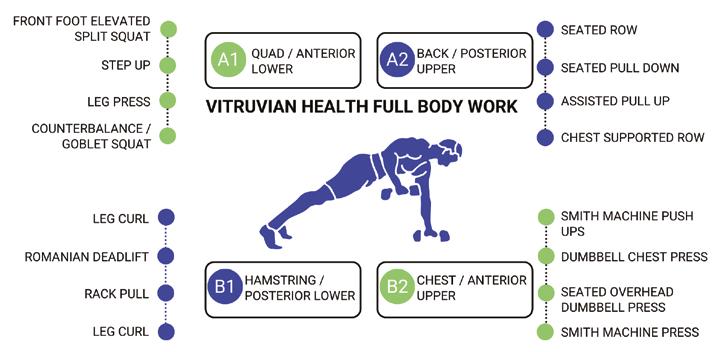
Experience the ultimate private pool villa luxury at the award-winning Agata Villas in Seminyak, Bali



Secluded tropical bliss awaits at Agata Villas Seminyak – your own private paradise. Discreetly tucked away from the hustle and bustle of Seminyak yet within easy reach of the beach clubs, restaurants and boutique’s Seminyak is known for.
You and a friend will experience:
• 5 nights’ accommodation in a two-bedroom pool villa

• Inclusions valid for up to four guests (NSWNMA will arrange for two return flights only as part of this prize)*
• Return airport transfers
• Daily breakfast served in your villa
• 2 x a la carte lunches and 2 x dinners per stay
• 1 x BBQ Seafood dinner at Melati Seafood Restaurant, Jimbaran (up to four guests)
• Daily afternoon tea
• 1 x Full Day Tour per stay (private charter)
• Welcome seasonal fruit basket and drink each guest on arrival

• The NSWNMA will arrange return flights for two to Bali

Recruiters note: Join online at www.nswnma.asn.au
Every member you sign up over the year gives you an entry in the draw! If you refer a member to join online, make sure you ask them to put your name and workplace on the online application form, so you will be entered in the draw. Conditions apply. The prize will be drawn on 1 July 2023 and must be redeemed by 30 June 2024. Subject to room availability. Block out dates 24 December 2023 – 3 January 2024. Accommodation package and inclusions (excluding flights) is valid for up to four guests. NSWNMA will arrange and pay for flights for two to Bali. If a redraw is required for an unclaimed prize it must be held up to 3 months from the original draw date.
